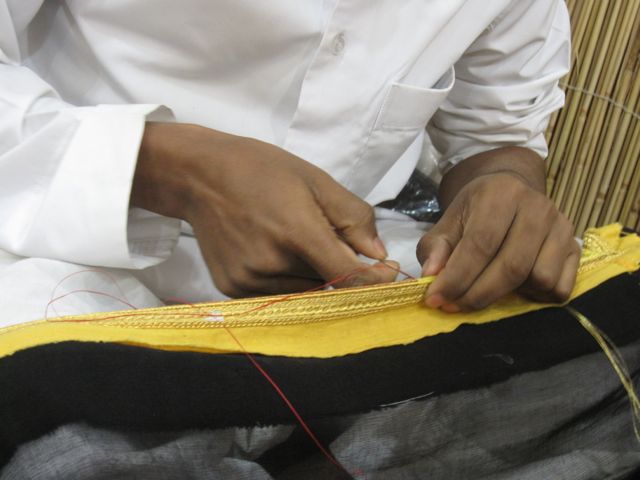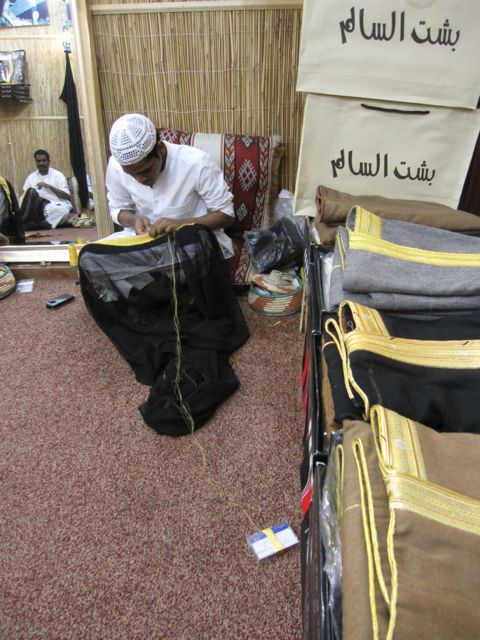Sometimes I forget that I live in an exotic place, to the sensibilities of people back home. A trip to the souq usually corrects that lapse. Even on a normal day, Souq Waqif smells of spices and incense, and teems with shopping Qataris, groups of small schoolchildren, the odd tourists, and of course the mounted traditional patrol, above. They are, ostensibly, some kind of security force, but really it's for show.
I was determined to find the 'handicraft section' of the souq, since I'd heard about it from people who moved here recently. The reason I hadn't known of it before was probably because it didn't exist. Anyway, entering the alley helpfully labeled "Handicraft Market", I found some guys working with their hands. This is a bhisht shop.
A bhisht is a traditional robe Gulf Arab men wear over their white thobe. They used to be made from handspun camel hair, and some of them probably still are. This one appears to be wool, and is a dense, warp-faced weave, as opposed to the more open, sheer plainweave often seen in diplomats' and political leaders' bhisht.
Gulf Arab leaders in typical dress (former Emir of Qatar, second from left, in the most sheer bhisht - a sign of status?)
While I've taken an interest in the wool of the robe, the metallic thread embroidery is so dense and shiny, I always kind of assumed it was made by machine. But these guys in the souq showed me how wrong I was. There they sat, earbuds in, fingers flying across the fabric stretched between their knees.
Some of them were couching the gold threads with another thread, as above, and others were actually making stitches with the gold. The bobbin of choice for metal threads is a cassette tape cover. I imagine them salvaging the tape boxes long after they have discarded the tapes in favor of their MP3 or iPod.
Given that this was an entirely male, Muslim space, I was timid with the photographs, and didn't get right up in their work to see the details of the stitching. But an examination of the finished pieces shows an impressive array of stitches and patterns, and I gained a new appreciation for this traditional garment.
The little spots of silver look almost random.





